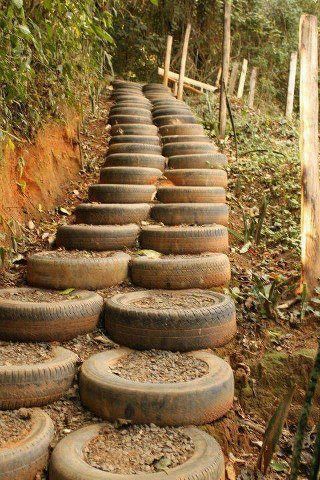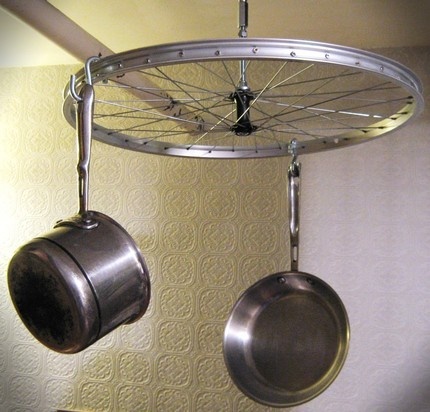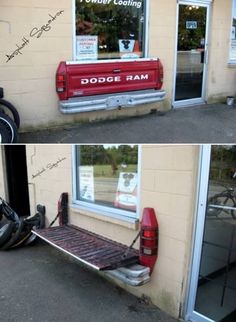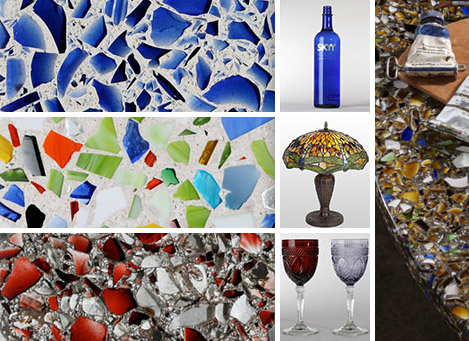By Mark L. Dowdell, P.E.
Have you ever attended a swanky dinner party and wanted to impress other party-goers with your overall smartness? Well, I can guarantee that you’ll be the life of the party after dropping these recycling-themed knowledge bombs.
A few terms that get thrown around when speaking about recycling are the processes of “upcycling” and “downcycling”. Both have vastly different meanings – which I’ll try to explain below.
In general:
Upcycling refers to the reuse of used/old materials to fulfill other purposes.
Downcycling refers to the degradation of materials after recycling process takes place.
Upcycling
I liken upcycling to being crafty and resourceful with everyday trash. While most people wouldn’t think twice about throwing these things away, some have made it a goal of theirs to be as thrifty as possible. Upcycling doesn’t require much effort, and if you’re of the crafty persuasion, it might be right up your alley. Here are a few examples to help get the point across:

Source
This outdoor stairway was built using tires found during the cleanup of the area. Rather than bringing in new materials for building the stairs, or paying for the disposal of the tires, they were repurposed for this hiking path.

Source
This bicycle wheel was on its way to take up space in a landfill when someone decided that it would serve a better purpose holding pots and pans. This one actually seems to be relatively simple to do, and yields some truly useful results.

Source
The truck that this tailgate belonged to was probably wrecked, and the tailgate was one of its last salvageable pieces. It now helps people sit down and relax. Though it looks more like a piece of artwork than anything, it still seems like a good way to show off the business’s dedication to being environmentally conscious.
Want more ideas? How about a hundred?
Downcycling
Unlike upcycling, downcycling is actually a negative side effect of the recycling process. It refers to the number of times a material can be recycled before there’s no life left to it and it MUST be landfilled. Though it appears that recycling plastics, cardboard, and metals is equally as beneficial to the environment, not all recyclables are created equal. As a matter of fact, certain materials that you throw into that recycle bin are actually not capable of being recycled the way you’d think. Plastics, for example, cannot be melted down and reused for the same purposes as their original products, unlike glass or aluminum. Therefore, these plastics must be ground up and used for fleece clothing or door mats (not for something that you’d eat out of).
The term downcycling refers to the degree of degradation that occurs to the material after being recycled. Below, I’ve listed the materials that yield the best bang for your buck in terms of recycling (the lowest rate of downcycling is listed first, the highest rate listed last).
1. Aluminum, Steel, and Glass – All those wine bottles, soda cans and steel girders break down very slowly or not at all during the recycling process. Take every step you can to recycle these materials, since they can be put back to use for the same purposes down the line!

Source
2. Paper and Cardboard – This material has around six to twelve downcycles before it must be landfilled. Because the fibers shorten every time it’s put through the recycling process, the life span of paper degrades rather quickly.

Source
3. Plastics – The best products that plastics can be directly recycled into are fleece material, carpet, railroad ties, and new products cast specifically as recycled plastic (such as Adirondack chairs). This means that at most, they have around one to two downcycles before needing to be landfilled.

Source
Only a very small percentage of #1 plastic can be recycled and utilized as plastic for bottles and other food-grade plastics. In addition, it takes significantly more resources to recycle plastic than glass or metals. It appears that the higher the number on the inside of the recycling symbol (normally #1-7) the more difficult it is to recycle. In light of this, Rhode Island currently accepts all plastics for recycling, regardless of their numerical designations.
For more information on recyclable materials and their downcycle rates, check out this chart.

